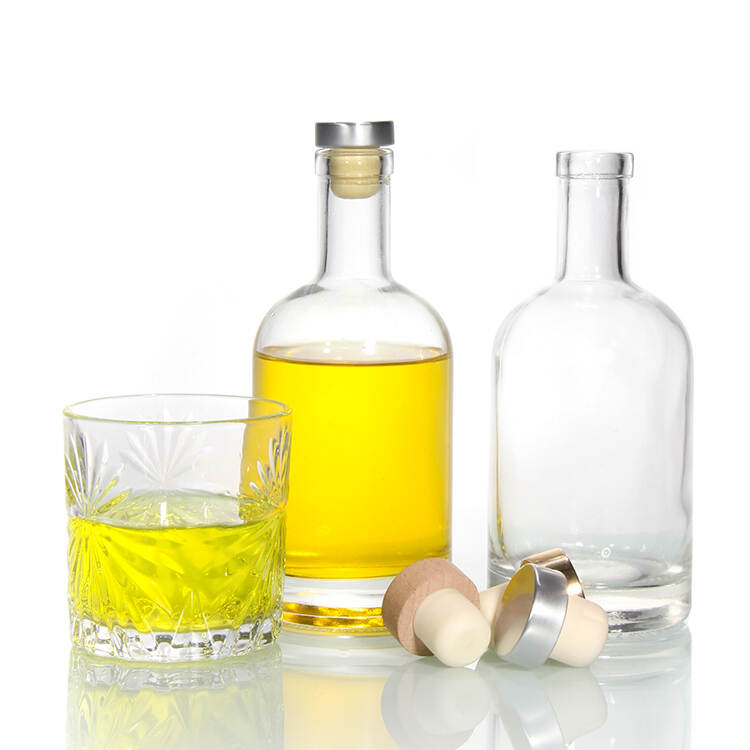Email cannot be empty
Password cannot be empty
Email format error
Email cannot be empty
Email already exists
6-20 characters(letters plus numbers only)
The password is inconsistent
Email format error
Email cannot be empty
Email does not exist
6-20 characters(letters plus numbers only)
The password is inconsistent


In a crowded marketplace, your product's packaging is often the first handshake with your customer. It's a silent storyteller, conveying quality, brand identity, and value. For discerning brands looking to make a lasting impression, custom glass bottles offer a premium, sustainable, and highly versatile canvas. But how do you navigate the journey from a brilliant idea to a tangible, beautifully crafted glass bottle in your hands?
This comprehensive guide will walk you through each essential step, ensuring your custom glass bottle project is a resounding success.
Step 1: Conceptualization & Defining Your Vision – The Spark of Creation
Every great custom glass bottle starts with a clear vision. Before diving into technical details, ask yourself:
This foundational stage is crucial. A well-defined concept will guide all subsequent decisions and ensure your final bottle aligns perfectly with your brand and product.
Step 2: Detailed Specifications & Technical Requirements – The Blueprint
With your vision solidified, it's time to translate it into concrete specifications. This is where precision matters:
Capacity: Specify the exact volume (e.g., 750ml, 500ml, 100ml).
Dimensions: Define the desired height, diameter, and specific neck finish (e.g., screw cap, cork, ROPP) to ensure compatibility with your chosen closure.
Glass Type:
Super Flint/Extra Flint: For ultimate clarity and a high-end feel, ideal for premium spirits and cosmetics.
Flint: Standard clear glass, excellent for a wide range of products.
Colored Glass: Amber or green glass offers UV protection for sensitive contents like beer or oils.
Decoration Techniques: How will you bring your brand to life on the bottle?
Labeling: Consider label panel size and shape.
Screen Printing: Direct printing onto the glass for a durable, premium look.
Decals/Heat Transfer: For intricate, multi-color designs.
Color Coating/Spraying: Achieves specific brand colors or opaque finishes.
Frosting: Creates an elegant, frosted appearance.
Embossing/Debossing: Adds tactile branding elements directly into the glass.
Hot Stamping: For metallic accents and a touch of luxury.
Quantity: Determine your initial order volume. Be aware of Minimum Order Quantities (MOQs) set by manufacturers.
Budget & Timeline: Establish a realistic budget for your custom glass bottles and a target timeline for the project.
Providing detailed specifications will help manufacturers give you accurate quotes and understand your needs precisely.
Step 3: Design & Engineering – Bringing Your Vision to Life (Virtually)
This is where your concept takes tangible form, at least digitally.
Collaboration: You can work with the manufacturer's in-house design team, hire an independent packaging designer, or, if you have the expertise, provide your own design files.
Technical Drawings: Crucial for production, these 2D drawings will detail all dimensions, tolerances, and specifications.
3D Renderings/Models: These provide a realistic visualization of your custom glass bottle, allowing you to review and refine the design before committing to molds.
Feasibility Check: The design must be manufacturable. Experienced designers and manufacturers will ensure your creative vision is also practical from a glass production standpoint (e.g., stability, even glass distribution).
Iterate on the design until you are completely satisfied. This stage ensures that what looks good on paper can also be beautifully and efficiently produced.
Step 4: Prototyping & Sampling – The First Physical Manifestation
Before committing to mass production, creating a physical sample is essential.
Mold Creation: Based on the approved technical drawings, a sample mold will be produced. This is often the most significant initial investment.
Sample Production: A small batch of physical samples will be manufactured.
Critical Evaluation: Meticulously inspect the samples:
Appearance: Does it match the 3D renderings and your vision?
Dimensions & Capacity: Are they accurate?
Functionality: Does the closure fit perfectly? Is it stable?
Decoration (if applicable): Are colors correct? Is the print quality high?
Feedback & Revisions: Provide detailed feedback to the manufacturer. If necessary, further revisions and new samples may be required.
Sample Approval: Once you are 100% satisfied, formally approve the sample. This approved sample becomes the "golden standard" for mass production.
Step 5: Mass Production & Quality Control – Scaling Up
With the sample approved, it's time for full-scale production.
Contract & Payment: Finalize the contract, including all specifications, quantity, pricing, delivery terms, and payment schedule (often a deposit is required to start production).
Production Monitoring: Maintain regular communication with your manufacturer to stay updated on the production progress.
Ongoing Quality Control: The manufacturer should have in-process quality checks. For large orders or new suppliers, consider arranging a third-party inspection at key production stages or before shipment. Agree on Acceptable Quality Limits (AQLs).
Packaging for Shipment: Ensure your custom glass bottles are securely packed to prevent damage during transit (e.g., using dividers, sturdy cartons, pallets).
Step 6: Logistics & Delivery – Receiving Your Masterpieces
The final leg of the journey involves getting your custom glass bottles to your facility.
Shipping Method: Choose the best option based on cost, time, and volume (sea freight, air freight, or land transport).
Customs & Duties (for international orders): Understand and prepare for any import duties, taxes, and customs clearance procedures. Your manufacturer or a freight forwarder can often assist with this.
Receiving & Inspection: Upon arrival, carefully inspect the shipment for any damage and verify that the quantity and quality match your order and the approved sample.
Conclusion: Your Vision, Bottled.
Ordering custom glass bottles is a detailed process, but by following these steps, you can transform your initial concept into a stunning reality. It requires careful planning, clear communication, attention to detail, and a strong partnership with your chosen manufacturer.
The result? A distinctive custom glass bottle that not only protects and presents your product but also elevates your brand, captivates consumers, and sets you apart from the competition.
Ready to bring your unique custom glass bottle vision to life? Contact our experts today for a consultation, and let’s create something extraordinary together!